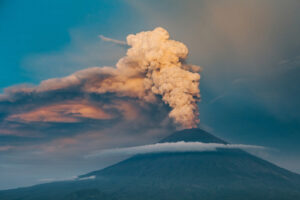Understanding Volcanic Activity: The Future of Yellowstone and Beyond

A Question that Rocks the Earth: What’s Happening with Yellowstone?
As we dive deeper into the unsettling topic of volcanic activity, it’s clear the conversation is heating up. Asked by a concerned reader named Pat, many share the worry about the Yellowstone supervolcano and its potential for future eruptions, particularly as predictions suggest an uptick in volcanic behavior starting in 2025.
The Yellowstone supervolcano, nestled in Wyoming, is not just another geographic feature; it’s one of the most formidable volcanic systems on our planet. With sentiments echoing from earlier forecasting that hinted at rising activity, it’s understandable to question the dangers posed by this geological titan.
The State of Yellowstone: A Dance of Lava and Time
Recent studies have revealed some eyebrow-raising activity lying beneath Yellowstone. However, interpreting this data is tricky. Historical records indicate significant rhyolitic lava flows in the caldera between 180,000 and 70,000 years ago, but the evidence remains too vague to create a reliable forecasting model. While we can confirm that catastrophic eruptions have shaped its past, experts face challenges in predicting its future.
The last major eruption at Yellowstone happened approximately 640,000 years ago, producing a steep caldera that witnesses its crowning glory of destruction. Its history is dotted with a mix of substantial eruptions and quieter spells, making it vital to correlate data from one supervolcano to another, like that of Naples’ Campi Flegrei, notorious for its colossal past eruptions.

Supervolcanoes Around the World: A Global Perspective
Yellowstone is not alone in its supervolcanic categorization. Globally, supervolcanoes such as Naples’ Campi Flegrei are reviving after centuries of dormancy. Campi Flegrei, like Yellowstone, is a ticking time bomb that recorded significant uplift of 4 meters in recent years—a telltale sign of magma accumulation within its chamber.
The Campi Flegrei supervolcano erupted around 39,400 years ago in one of the Northern Hemisphere’s largest volcanic explosions, blanketing the eastern Mediterranean with ash and causing catastrophic climatic consequences, including a volcanic winter. With another recent uptick in seismic activity observed here, the specter of another eruption looms, raising the stakes for Italy and beyond.
Skyrocketing concerns about volcanic activity arise, especially as we enter a solar minimum, known for its relation to intensified volcanic eruptions. The correlation between climate shifts, pole shifts, and volcanic activity is a curious web that researchers are just beginning to unravel.
The Implications of Recent Findings
As we examine the rising instances of volcanic activity globally, it’s crucial to acknowledge that recent findings point to a potential acceleration of geological events. Revised geological timelines reveal that significant geological occurrences may unfold within mere decades rather than centuries. Such rapid changes pose threats to satellite operations and human society as the geomagnetic field may weaken.
Amidst growing worries about the looming threat of seismic disasters like those at Campi Flegrei, experts are reminding us to remain vigilant and prepared. The cyclical nature of volcanic eruptions suggests that we should heed historical lessons while strategizing modern responses to these geological marvels.
Final Thoughts: Rethinking Our Future with Volcanoes
In an age where uncertainty reigns supreme, adding the potential eruption of supervolcanoes to our list of concerns might feel overwhelming. But at Extreme Investor Network, we believe understanding the risks can equip us better for future challenges.
While past data may often feel like a jigsaw puzzle with missing pieces, combining knowledge across geographies helps us paint a clearer picture. As we remain watchful of geological developments, embracing an informed perspective empowers not just personal safety but can also shape larger investment decisions in the future.
Remember: while the roar of volcanoes beckons, it’s knowledge that can truly strengthen our resilience against natural disasters. Let’s stay informed, prepared, and proactive in our understanding of these formidable forces of nature.
Stay updated with Extreme Investor Network as we continue to explore the intricate relationships between the economy, natural disasters, and human life. The more we learn, the more equipped we are to handle the earth’s fiery unpredictability!

